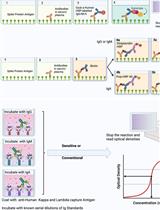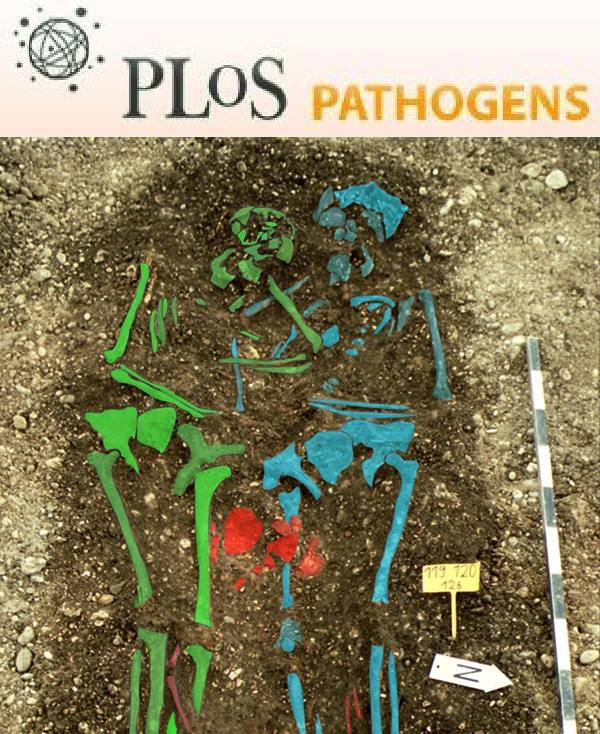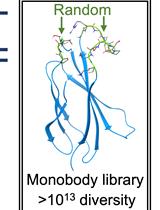- EN - English
- CN - 中文
Cyclic Nucleotide (cAMP and cGMP) Assays and Capture ELISA for Quantitative Analysis of Plasmodium falciparum Blood-stage Egress
采用环核苷酸(cAMP和cGMP)试验和捕获酶联免疫吸附法量化分析恶性疟原虫红内期外出
发布: 2014年03月05日第4卷第5期 DOI: 10.21769/BioProtoc.1055 浏览次数: 11722
评审: Anonymous reviewer(s)

相关实验方案

用于检测和定量人血浆或血清中抗病毒抗体的优化间接 ELISA 方案:以 SARS-CoV-2 为例的案例研究
Claire Baine [...] Jennifer Serwanga
2023年12月20日 3555 阅读
Abstract
Upon rupture of Plasmodium falciparum (P. falciparum) schizonts in vitro (an event known as egress), merozoites are released into the culture medium. The merozoites invade fresh red blood cells, a process that involves shedding of a microneme protein called apical membrane antigen-1 (AMA1) from the merozoite surface. This shedding, which takes place even in the absence of invasion, is therefore a surrogate marker for the degree of egress taking place in a culture, and can be measured using a specific capture ELISA to quantify AMA1 levels in culture supernatants (Collins et al., 2013). The assay uses a monoclonal antibody specific for AMA1 (called 4G2dc1) (Kocken et al., 1998; Collins et al., 2009) to capture and immobilize the protein from culture supernatants, then uses a specific rabbit polyclonal antiserum to detect the immobilized antigen. A phosphatase-conjugated goat anti-rabbit antibody is finally used to quantify the binding of the second antibody. Egress is absolutely dependent upon the activity of a parasite cGMP-dependent protein kinase, PKG, and so is influenced by levels of intracellular cGMP (Collins et al., 2013). This is regulated by the interplay between guanylate cyclases and phosphodiesterases. The latter enzymes may also degrade cAMP, so it may also be informative to measure intracellular cAMP levels.
Materials and Reagents
- Plasmodium falciparum schizonts
- DetectX Direct cGMP or cAMP immunoassay kit (Arbor Assays, catalog number: K020-H1 or K019-H1 )
- Protein-free RPMI 1640 (Life Technologies, InvitrogenTM)
- Albumax
- Zaprinast (Sigma-Aldrich, catalog number: Z0878 )
Note: Make up as a 50 mM stock solution in DMSO and stored at -20 °C.
- PKG inhibitor compound 1 {4-[2-(4-fluorophenyl)-5-(1-methylpiperidine-4-yl)-1H-pyrrol-3-yl] pyridine} (Merck KGaA)
Note: Make up as a 10 mM stock solution in DMSO and stored at -20 °C.
- Anti-AMA1 monoclonal antibody (clone 4G2dc1) (Kocken et al., 1998)
- Complete RPMI 1640 culture medium (Blackman, 1994)
- Tween 20
- Rabbit polyclonal anti-AMA1 serum (Collins et al., 2009)
- Phosphatase-conjugated goat anti-rabbit IgG (whole molecule) (Sigma-Aldrich, catalog number: A3687 )
- Phosphatase substrate (Sigma-Aldrich, catalog number: S0942 )
- Phosphate-buffered saline (PBS)
- Sodium azide [10% (w/v) stock solution in water]
- Dry ice-ethanol mix for freezing
- Gelatine-tween stock solution (blocking buffer) (see Recipes)
- 0.1 M Sodium carbonate/bicarbonate (pH 9.6) (see Recipes)
- Diethanolamine buffer (pH 9.8) (see Recipes)
Equipment
- Centrifuge
- 96-well Immulon plates (Nunc®)
- ELISA reader
- Incubator
Procedure
文章信息
版权信息
© 2014 The Authors; exclusive licensee Bio-protocol LLC.
如何引用
Readers should cite both the Bio-protocol article and the original research article where this protocol was used:
- Hackett, F., Collins, C. R., Strath, M. and Blackman, M. J. (2014). Cyclic Nucleotide (cAMP and cGMP) Assays and Capture ELISA for Quantitative Analysis of Plasmodium falciparum Blood-stage Egress. Bio-protocol 4(5): e1055. DOI: 10.21769/BioProtoc.1055.
- Collins, C. R., Hackett, F., Strath, M., Penzo, M., Withers-Martinez, C., Baker, D. A. and Blackman, M. J. (2013). Malaria parasite cGMP-dependent protein kinase regulates blood stage merozoite secretory organelle discharge and egress. PLoS Pathog 9(5): e1003344.
分类
微生物学 > 微生物生物化学 > 蛋白质 > 免疫检测
生物化学 > 蛋白质 > 免疫检测 > 酶联免疫吸附试验(ELISA)
生物化学 > 其它化合物 > 环磷酸腺苷(cAMP)
您对这篇实验方法有问题吗?
在此处发布您的问题,我们将邀请本文作者来回答。同时,我们会将您的问题发布到Bio-protocol Exchange,以便寻求社区成员的帮助。
Share
Bluesky
X
Copy link












